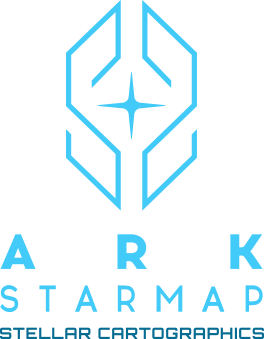 | |
| Ark Starmap | |
|---|---|
| Type | Database |
| Owner | The Ark |
The Starmap is an in-lore map of star systems run by the Ark initiative in the Star Citizen universe. It can be accessed in-game and through a web browser on the RSI website.
Purpose
The Starmap is a public resource that aims to provide a complete user-friendly overview of the galaxy, showing that we are all just a small part of something much larger and at the same time, that even a distant world can be only a few jumps away. And, as the universe is not a static place, neither is the Starmap. As our knowledge continues to grow, the Starmap grows with it. Compiled by the Ark with the latest data from the Imperial Cartography Center, private infobanks, individual surveyors and university astronomical studies, the Starmap attempts to provide an unbiased look at the galaxy. Though some information has come from the Ark's other member species, it has been limited in scope due to Xi'an diplomatic complications and difficulties inherent with Banu record keeping.[1]
History
At the dawn of the 29th century, a new center of knowledge and understanding was constructed: The ARK. Not bound to any one place, species or government, the Ark was established under a simple principle: to provide a neutral repository for all galactic knowledge.
A pet project of Imperator Marshall Leon, the desire was to usher in a new era of cooperation between species after hundreds of years of hostilities. Imperator Leon believed that the simplest path to peace was empathy and sought to unite the greatest minds of not only Humanity, but also of the Xi'an, Banu, Tevarin and even Vanduul to endeavor towards this noble goal. The Vanduul, to date, have not participated in the Ark program.
There were many hurdles along the way. The Senate refused funding when they learned the project was going to be run privately. Some vocal opponents were worried that the data shared would be used against Humanity. The invitation to the Vanduul incited calls for Imperator Leon's removal from office. Yet despite all that, the Ark was completed, and as we approach the institution's sesquicentennial anniversary, it is hard to deny the positive impact this incredible resource has had on civilization. To this day it continues to strive to present a holistic viewpoint of history; collecting as much knowledge as they can, from as many sources as they can.
Currently residing in the Tayac System, the Ark and its team of dedicated archivists and researchers curate this information for the Galactapedia and the Starmap. Invaluable tools that allow all beings to better understand the universe and find their way through it.[1]
Accessing The ARK Starmap
The ARK Starmap can be accessed here.
Data Sources
In addition to tracking celestial objects and jump point routing information, the Starmap incorporates demographic information from several trusted sources.[1]
Population Data
Generated by the UEE Naval Intelligence Division every year, the NID 2944 Population Assessment Report is intended to serve as a reference for Naval High Command, policymakers, senators, and planetary leaders. Point-In-Time population estimates are derived utilizing data from UEE Census Bureau, UEE Department of Development, detailed orbital scans, and Naval on-site teams.[1]
Economy Data
The Jappa & Penner (J&P) Economic Health Score, or J&P Score, has been an Empire standard for close to three centuries in evaluating the financial status of regions. Named for the firm who derived the ranking system, J&P Scores take into account a myriad of factors such as trade, growth, debt, capital, etc. to assign letter grades ranging from F for an area with little potential, to AAA to designate a hub of extraordinary economic value.[1]
Threat Data
The UEE Advocacy compiles crime statistics and casualty reports to create Travel Safety Advisory System (TSAS) to inform the public how dangerous they expect travel in certain sectors can be with Threat Levels ranking from 'minimal danger' to 'extreme danger.'[1]